Robert C. Morgan, Gahae Park, and John Mendelsohn at Studio Artego Gallery
by Thalia Vrachopoulos
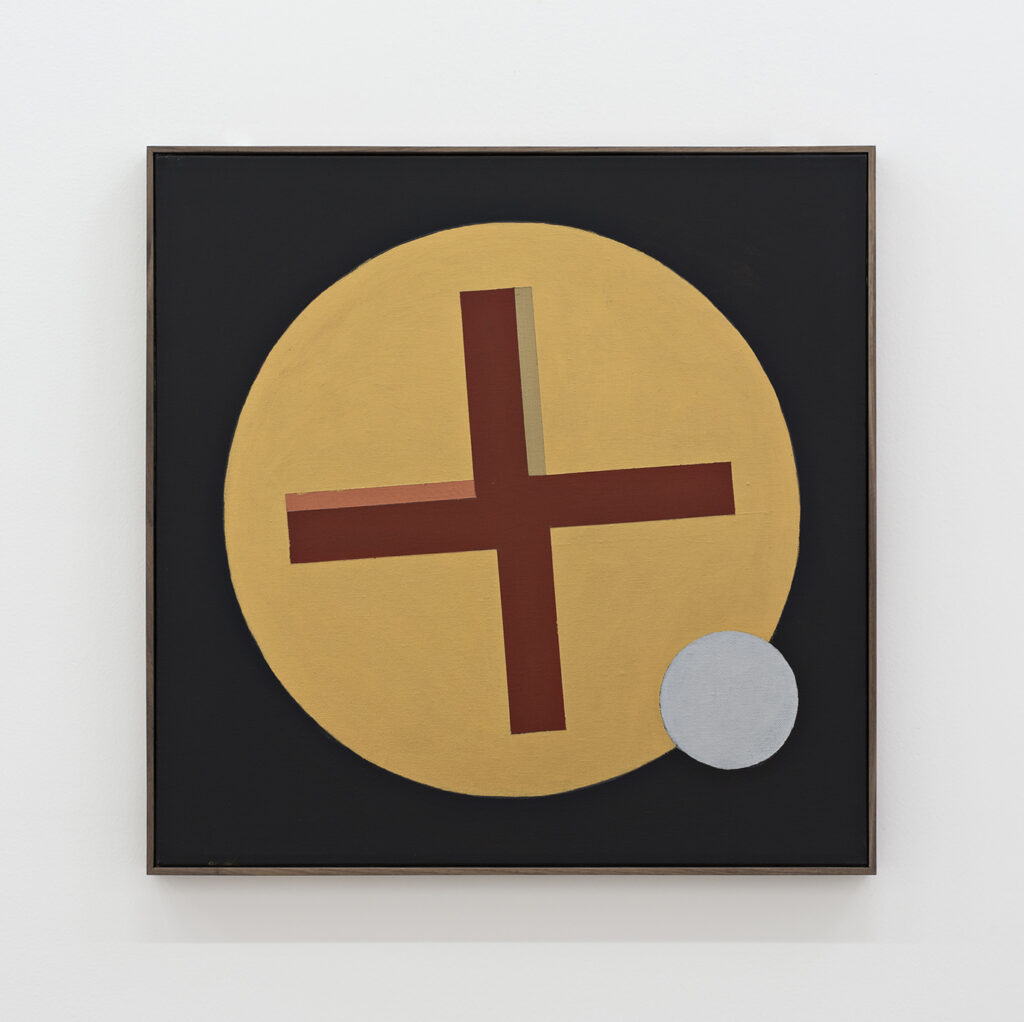
The newly opened gallery Studio Artego in Long Island City evidences the increasing de-centralization resulting from globalization and rising rental costs in Manhattan. Their April show featured a three-person exhibition entitled Passion and Ego: John Mendelsohn, Gahae Park, Robert C. Morgan curated by Soojung Hyun. Through the theme, Hyun examines the synergistic effects of the three featured artists’ individual artistic languages. The formal artistic means geometric forms, consideration of light and line are used as thematic foil to tie the artists’ work together. The title Passion and Ego, is defined by Hyun in the online catalogue accompanying the show, as the “sense of tireless dedication of an artist to his work and resultant spiritual fulfillment.” The latter idea is found in the works of the early abstractionists Vasily Kandinsky, Franz Marc, Piet Mondrian et al, who were salvationist in character, and sought a common language in their search for spiritual enlightenment.
Morphologically, the exhibit is flawless in its pristine lines and simple installation that complements the abstract nature of the works. The viewer’s eye is not interrupted by any abrupt changes or jarring elements thus, it moves smoothly around the gallery to absorb the show’s coherence. Although the exhibition contains works in different media such as painting, and paper installations they harmonize as a group.
To begin with, Robert C. Morgan’s abstract pieces are confined to black, maroon, gold, copper, and silver. In this sense, Morgan like the Dutch modernist Piet Mondrian, minimized his color palette and reduced his forms to their simplest essence. But whereas, the latter used primary colors, Morgan’s are tertiary or mixed colors and metallic shades. Morgan’s circles and squares in their architectonic nature and coloration, are closer the Proun paintings of the Russian avant-garde artist El Lissitzky. Morgan’s forms as seen in Lissajous 21, 2015-16 (metallic paints on canvas, 20×20”) like Lissitzky’s feature shifting axes that offer us multiple spatial perspectives.
Morgan’s Lissajous also known as a Bowditch curve, refers to a family of curves invented by Nathaniel Bowditch in 1815, that in physics is a graph of a system of parametric equations that describe complex harmonic motion enclosed by rectangular boundaries. Jules Lissajous a French mathematician later sought to develop optical methods for studying vibrations and the resultant waves or ripples/curves they caused. The three artists Morgan, Lissitzky and Mondrian have mathematics in common within their geometricity. While Morgan examines Lissajous curves and their equations, Lissitzky analogized art with the functions and systems of mathematics, and Mondrian used the Golden Ratio to produce harmony and balance in his abstractions. Morgan’s pieces are Minimal as his forms are planned with precision, and immaculately constructed while containing superb attention to detail.
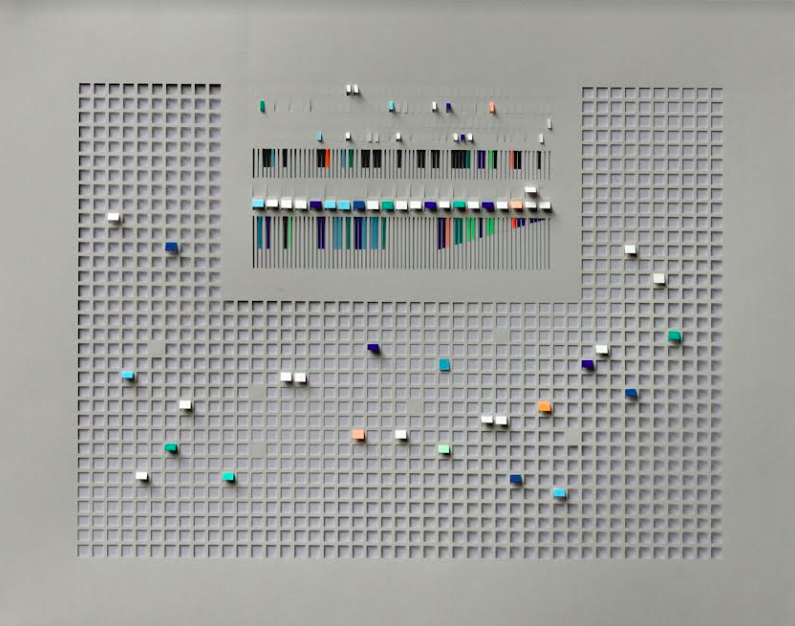
Gahae Park also works with geometric abstraction but her media differ from those of the painters Morgan and Mendelsohn. Park creates what she calls ‘cut-out drawings’ that result in two- dimensional sculptures and installations in paper. Moreover, Park engages with a different subject matter than the other two artists in the show. She focuses on correspondences that “deeply connect with the sound and structure of music.” It was the Russian painter Vasily Kandinsky who considered music as the most abstract of all the arts who at the beginning of the 20th century corresponded with the Austrian composer Arnold Schoenberg. Their interests coincided as the latter was an exponent of atonal music and the first an abstract master. Fascinated by music’s emotional power, and being musically inclined Kandinsky analogized color and sound. Park to whom music evokes abstract space, inspired by these correspondences, produced a new type of space, one that incorporates the Eastern philosophical idea of the void in the Yin/Yang symbol of the Tao Te Ching, a Chinese philosophical text written by Laotzi ca. 400 BC expounding on Taoism. The cosmic duality of these two Taoist energies in nature Yin being the female principle and Yang the male, is believed to be both complementary and opposing simultaneously. As seen in her meticulously cut out paper work Music Drawing—Rhythm and Variation, 2018 (cut paper, gouache, 24×30”), Park allows the negative cut out spaces set at intervals corresponding to musical notes, to play with the positive space in order to produce varied and multi-tonal harmonies.
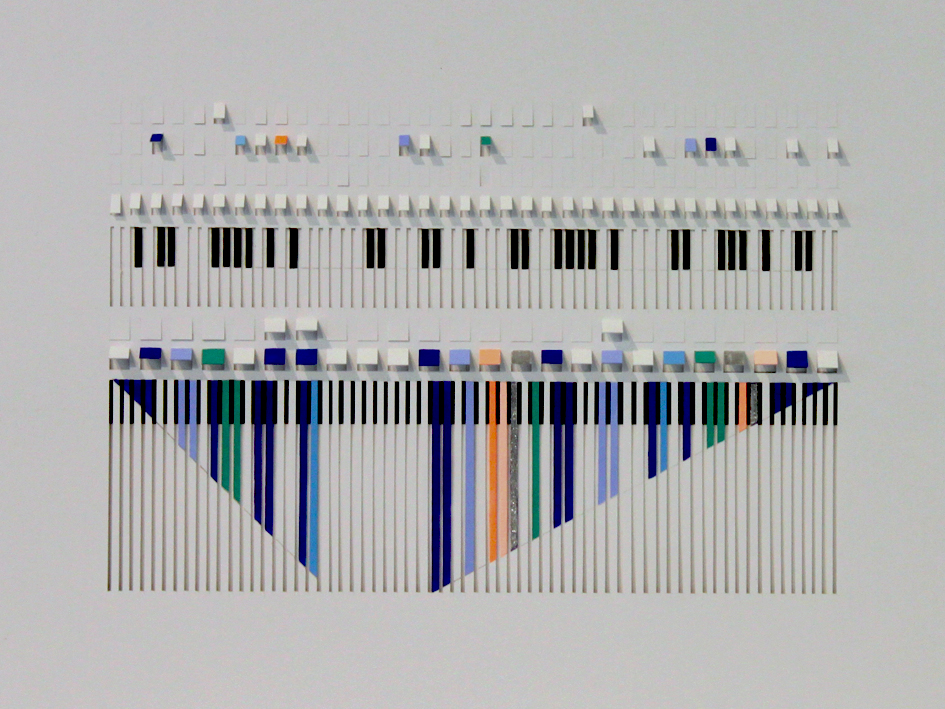
Another of Park’s music drawings Music Drawing-Etude, 2022 (cut-paper, gouache. 10×13”) alludes to a piano keyboard while simultaneously to an etude or technical exercise. This idea also corresponds to an artistic experimentation or exploration in the pursuit of resolving a specific formal issue much like Claude Monet’s study of light or Degas’ study of movement. Moreover, Park crosses modalities as her synesthesia produces works that demonstrate correlated patterns that work together through emotional mediation and expression to formulate music to color association.
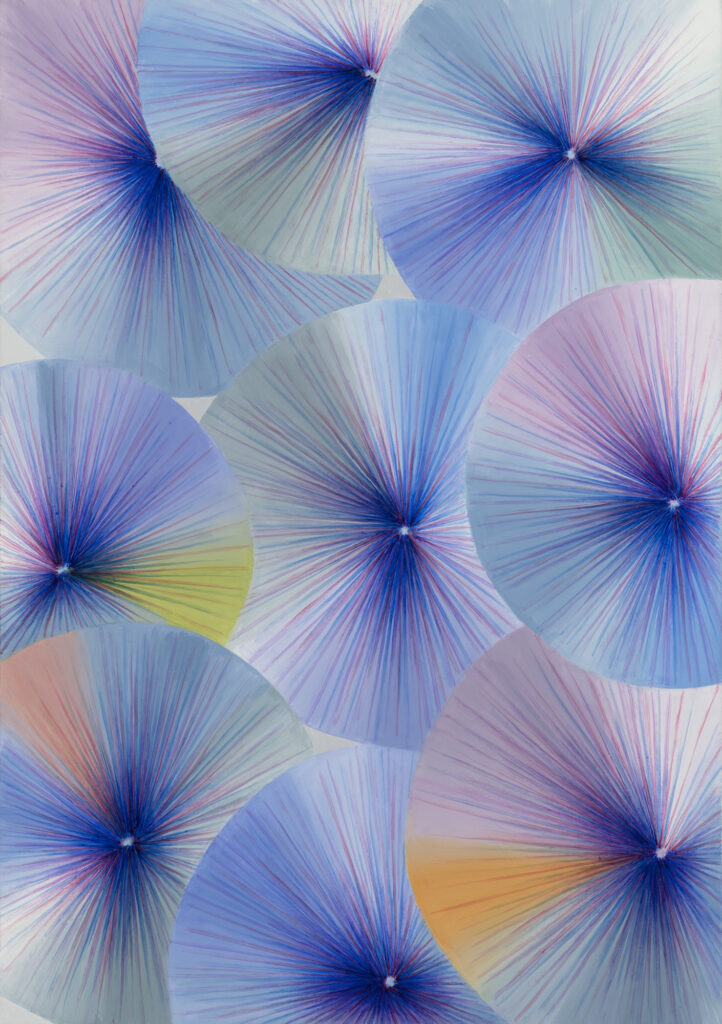
The third artist in Passion and Ego is John Mendelsohn who is an abstract painter. One might think that the title of Mendelsohn’s painting Color Wheel 1, 2020 (Acrylic on Canvas, 30×21”) tells it all, but meaning is also imbued by the viewer whose reading of it, enriches the artwork. In an interview with David Eichholtz, Mendelsohn spoke of his series’ possible multiple meanings, mentioning among others Walter Benjamin’s “auratic work”, the wheel of life, floral forms, umbrellas, music of the spheres, etc. Formally, his paintings examine shifting visual occurrences and vision’s optical excitation. Mendelsohn’s Color Wheel series demonstrates the interaction of color resulting in sensations of simultaneous depth and movement.
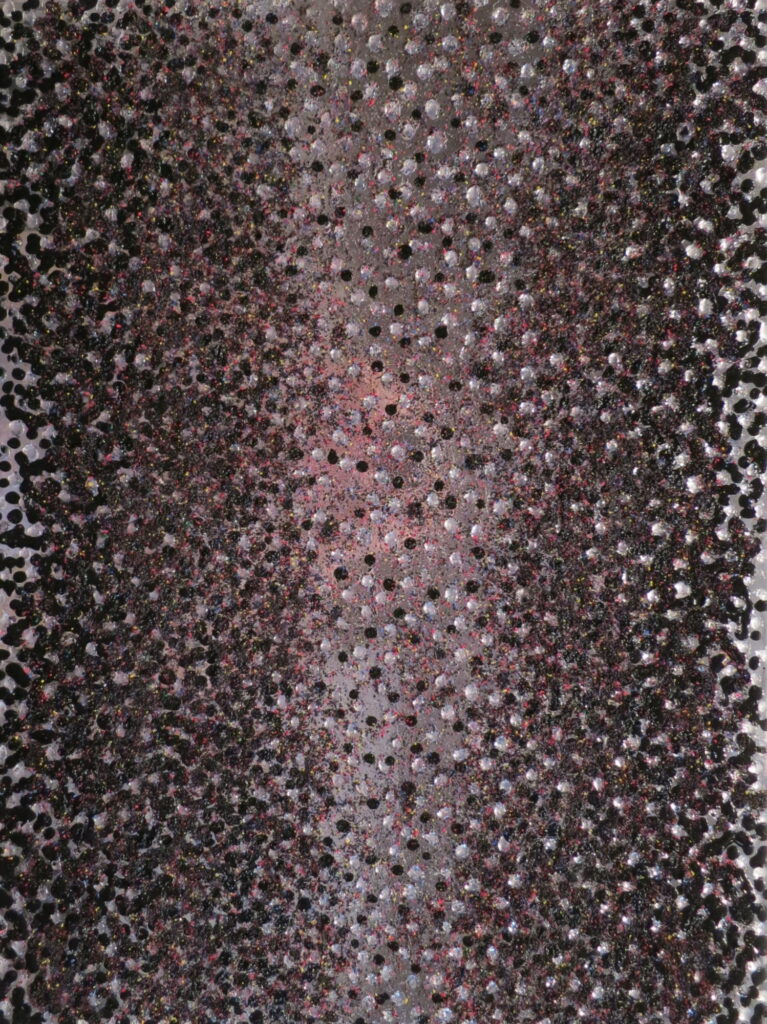
Mendelsohn’s Gate 3, 2017 (Acrylic on Canvas, Silicone, Acrylic, Colored Sand on Acetate, 24×18”) maintains viewer interest through its sensuous, painterly surface impasto as well as, its reflective qualities. He accomplishes the latter through his use of varying supports like clear acetate or foil so that, the feeling is analogous to looking through many layers. The contrast between matte and shiny surfaces and painterly, viscosity also help in giving the whole painting an air of mystery. There is also a successful dialogue between the title and the work whose multi -layering suggests a gateway or veiled entryway.
All in all, this show’s success is due to the expertise of the three artists but also to the curator’s choice and immaculate installation technique. The goal of the recent galleries opening outside of Manhattan perimeters is not only to find cheaper rents and bigger spaces, but also to make art available to geographically and ethnically diverse populations. It is worth the extra time to travel from the city if it is to see exhibits such as Passion and Ego.
Passion and Ego: Robert C. Morgan, Gahae Park, John Mendelsohn, Three Person Show: March 15 – April 29, 2022 at Studio Artego, 32-88 48th Street Unit 2, Long Island City NY 11103 www.studioartego.com
